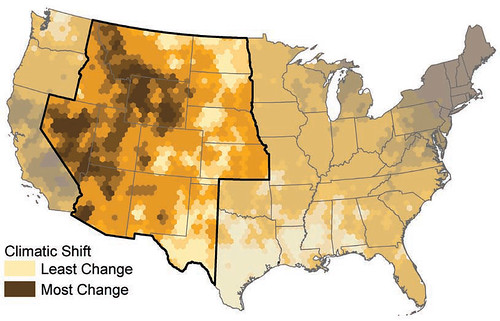
Weather…. We all care about it. In many communities, local TV and radio weather forecasters are celebrities, and for good reason. While we can’t do much about the weather, it affects us all every day.
During last week’s Agricultural Outlook Forum two sessions drew exceptionally large crowds. One was the Friday afternoon “Weather and Agriculture” segment and another was the morning “Markets and Weather” presentation. While no one can say for sure what the weather outlook will be for the 2014 summer growing season, Brad Rippey, agricultural meteorologist with USDA’s Office of the Chief Economist (OCE), Eric Luebehusen, OCE ag. meteorologist and Anthony Artusa, meteorologist with the Climate Protection Section of the National Oceanic and Atmospheric Administration made some observations and predictions in the afternoon session. The snowpack in the West’s Sierra Nevada is far below normal. The Western winter wet season has been a bust, with winter precipitation less than 10 percent of average in some areas. California, the Great Basin and southern Great Plains are in drought. The meteorologists said California, the lower gulf coast and much of New Mexico, Arizona and Texas could see above normal temperatures and below normal precipitation in March, April and May. According to Rippey, “We need a miracle March in 2014 to avoid major problems in California.” The most current information is available through NOAA’s Seasonal Drought Outlook map and the USDA drought monitor.
The morning session featured a discussion on ways producers and forest owners can increase resilience to climate variability. Filling in for a speaker who was forced to cancel because of a snowstorm, Dr. Carolyn Olson of the USDA Natural Resources Conservation Service (NRCS) discussed how soil texture matters in times of drought. “Good soils produce good yield,” but as importantly, good soil has increased water holding capacity. Additionally, conservation practices like cover cropping increase the ability of soil to retain water and increase resilience to climate change. Adam Chambers, with the NRCS Air Quality and Atmospheric Change Team in Portland, Oregon, outlined practices that can increase the sequestration of carbon and reduce greenhouse gasses. “Can we produce more food, fiber and fuel while also increasing conservation? I think we can,” he said. He talked about how the agriculture sector is a leader in the areas of water conservation and nutrient management, and that more producers are working voluntarily to keep more carbon in the ground. Working with organizations like Ducks Unlimited by providing Conservation Innovation Grants, and setting up carbon credit trading systems, he said, USDA can move the effort forward.
Finally, Bill Hohenstein, director of the USDA Office of Global Climate Change outlined the Secretary’s recent announcement of the creation of seven regional climate hubs, to act as an information storehouse for producers, and repositories of scientific data on climate change. More information about climate hubs and USDA’s efforts to assist producers facing the challenges of climate change is available here.


